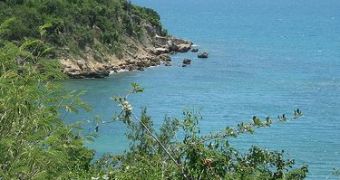Scientists from the U.S Geological Survey and NASA, have established the most complete data on the distribution and decline of mangrove forests across the world, thanks to new satellite imagery.
Mangrove forests include tress, palms, and shrubs that grow at tropical and subtropical tidal areas across the equator, and they make the most biologically important and productive ecosystems in the world.
They have adapted to the most harsh environments and now grow in regions of high salinity, roasting temperatures and extreme tides.
Still, within the last decades, human activity and frequent storms have started a severe decline of mangrove forests, worse than the loss of coral reefs or tropical forests.
Thanks to data from the NASA satellite, Dr Chandra Giri from USGS along with an international team including 30 student interns and scientists from all over the world, analyzed more than 1,000 “Landsat” scenes using digital image classification techniques.
This operation allowed them to put together the world’s most precise map of mangrove distribution, that reveals that there are nearly 137,760 km2 of mangroves around the globe, significantlt less than what was previously thought.
Giri said that “assessment shows, for the first time, the exact extent and distribution of mangrove forests of the world at 30 meters spatial resolution, the highest resolution ever.
“This reveals that 75% of the remaining forest is found in just 15 countries, out of which only almost 6.9% is protected under the existing protected areas network.”
“The current estimate of mangrove forests of the world is less than half what it once was, and much of that is in a degraded condition,” she added.
“It is believed that 35% of mangrove forests were lost from 1980 to 2000 which has had an impact on the coastal communities that use mangrove forests as a protective barrier from natural disasters such as hurricanes and tsunamis.”
Dr Garik Gutman, from the NASA Land Cover/Land-Use Change Program, that funded the project, said that “the mapping of mangrove forests at this resolution, on a global scale, has never been attempted, partly due to cost and computation limitations.”
“The Global Land Survey data produced by NASA and USGS has enabled worldwide land cover projects like this, because pre-processing global coverage of Landsat data at project levels is a gigantic task.”
When thinking that the remaining mangrove forests spread across 118 countries and territories, this work is truly the most comprehensive global database ever created.
Mangrove forests distribution is 12.3% smaller than what was previously estimated as mangroves spread as follows: 42% in Asia, 21% in Africa, 15% in North and Central America, 12% in Oceania and 11% in South America.
This research is published in Global Ecology and Biogeography, AlphaGalileo relates.

 14 DAY TRIAL //
14 DAY TRIAL //